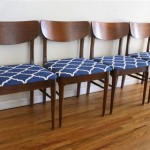How To Seal Teak Outdoor Furniture For Lasting Beauty
Teak outdoor furniture is prized for its natural beauty, durability, and resistance to the elements. Its high oil content makes it naturally water-resistant and resistant to decay. However, despite its inherent qualities, sealing teak furniture can significantly extend its lifespan and maintain its aesthetic appeal, especially in environments with harsh weather conditions or heavy usage.
This article provides a comprehensive guide on how to properly seal teak outdoor furniture, covering the necessary materials, preparation steps, application techniques, and maintenance tips to ensure optimal protection and longevity.
Understanding the Benefits of Sealing Teak Furniture
While teak is known for its durability without treatment, sealing it offers several key advantages. Understanding these benefits is crucial in making an informed decision about whether to seal teak furniture.
Firstly, sealing teak helps to maintain its original color. Untreated teak will gradually weather to a silver-gray patina, which is a desirable aesthetic for some. However, if maintaining the warm, golden-brown hue is preferred, sealing will protect the wood from UV damage and oxidation, which are the primary causes of color fading.
Secondly, sealing protects against stains and spills. Teak's porous nature allows liquids to penetrate the surface, leading to unsightly stains that can be difficult to remove. A sealant creates a barrier that prevents liquids from soaking into the wood, making cleanup easier and preserving the furniture's appearance.
Thirdly, sealing provides an extra layer of protection against moisture. While teak is naturally water-resistant, prolonged exposure to moisture can still lead to warping, cracking, or the growth of mildew. A sealant reinforces the wood's natural defenses, minimizing these risks and prolonging its lifespan.
Finally, sealing can prevent the wood from drying out and cracking. The natural oils in teak can deplete over time, especially in hot, dry climates. A sealant helps to lock in these oils, keeping the wood supple and preventing it from becoming brittle and prone to cracking.
Preparing Teak Furniture for Sealing
Proper preparation is essential for a successful sealing project. This involves cleaning the furniture thoroughly and ensuring that the surface is smooth and free of any imperfections.
Begin by cleaning the teak furniture with a mild soap and water solution. Use a soft-bristled brush to scrub away any dirt, grime, or mildew. Avoid using harsh chemicals or abrasive cleaners, as these can damage the wood. Rinse the furniture thoroughly with clean water and allow it to dry completely. This may take several hours or even overnight, depending on the weather conditions.
Once the furniture is dry, inspect it for any imperfections such as scratches, dents, or splinters. If necessary, sand the surface lightly with fine-grit sandpaper (220-grit or higher) to smooth out any rough spots. Sand in the direction of the wood grain to avoid creating unsightly scratches. After sanding, wipe away any sanding dust with a clean, damp cloth.
For older teak furniture that has already weathered to a gray patina, a teak cleaner or brightener may be necessary to restore its original color. These products typically contain oxalic acid, which helps to remove the gray surface layer and reveal the fresh wood underneath. Follow the manufacturer's instructions carefully when using teak cleaner or brightener, and always wear appropriate safety gear, such as gloves and eye protection.
After cleaning and sanding, it is crucial to allow the furniture to dry completely before applying the sealant. Any moisture trapped beneath the sealant can lead to blistering or peeling, compromising its effectiveness.
Choosing the Right Teak Sealer
Selecting the appropriate teak sealer is crucial for achieving the desired results and protecting the furniture effectively. There are several types of teak sealers available, each with its own advantages and disadvantages.
Teak oils are a popular choice for sealing teak furniture. They penetrate deeply into the wood, nourishing it and enhancing its natural color. However, teak oils typically require frequent reapplication, as they tend to wear off quickly, especially in high-traffic areas or harsh weather conditions.
Teak sealers, also known as teak protectors, are designed to provide longer-lasting protection than teak oils. They form a protective barrier on the surface of the wood, shielding it from moisture, UV damage, and stains. Teak sealers typically contain UV inhibitors to prevent color fading and mildew inhibitors to prevent the growth of mold and mildew.
Water-based teak sealers are an environmentally friendly option that is low in VOCs (volatile organic compounds). They are easy to apply and clean up, and they provide good protection against moisture and UV damage. However, water-based sealers may not be as durable as oil-based sealers.
Oil-based teak sealers are known for their durability and long-lasting protection. They penetrate deeply into the wood, providing excellent resistance to moisture, UV damage, and stains. However, oil-based sealers typically contain higher levels of VOCs and may require more careful application and cleanup.
When choosing a teak sealer, consider the desired level of protection, the frequency of maintenance, and the environmental impact. Read the product labels carefully and choose a sealer that is specifically designed for outdoor teak furniture. It is also advisable to test the sealer on a small, inconspicuous area of the furniture before applying it to the entire surface.
Applying the Teak Sealer
The application process is critical to the success of sealing teak furniture. Following these steps will help ensure a smooth, even finish and optimal protection.
Start by applying a thin, even coat of teak sealer to the furniture using a brush, roller, or sprayer. Follow the manufacturer's instructions carefully, and avoid applying too much sealer, as this can lead to drips or runs. Work in the direction of the wood grain to ensure even coverage.
If using a brush, choose a high-quality brush with synthetic bristles. This will help to ensure a smooth, even application and prevent brush marks. If using a roller, choose a roller with a short nap to avoid applying too much sealer. If using a sprayer, adjust the spray nozzle to achieve a fine, even mist.
Allow the first coat of sealer to dry completely according to the manufacturer's instructions. This may take several hours or even overnight, depending on the weather conditions. Once the first coat is dry, inspect the furniture for any imperfections or thin spots. If necessary, apply a second coat of sealer to provide additional protection.
After applying the final coat of sealer, allow it to dry completely before using the furniture. This will help to ensure that the sealer is fully cured and provides optimal protection. Avoid placing any objects on the furniture during the drying process, as this can leave marks or indentations in the finish.
Clean the application tools immediately after use with the appropriate solvent, such as mineral spirits for oil-based sealers or soap and water for water-based sealers. Dispose of any used rags or cloths properly to prevent spontaneous combustion.
Maintaining Sealed Teak Furniture
Proper maintenance is essential for preserving the beauty and extending the lifespan of sealed teak furniture. Regular cleaning and periodic reapplication of the sealant will help to keep the furniture looking its best.
Clean the furniture regularly with a mild soap and water solution to remove dirt, grime, and spills. Avoid using harsh chemicals or abrasive cleaners, as these can damage the sealant. Rinse the furniture thoroughly with clean water and allow it to dry completely.
Inspect the furniture periodically for any signs of wear or damage, such as scratches, cracks, or peeling sealant. Touch up any damaged areas with a fresh coat of sealer. Lightly sand the affected area before applying the sealer to ensure proper adhesion.
Reapply the teak sealer every year or two, depending on the level of exposure to the elements. In harsh climates or high-traffic areas, more frequent reapplication may be necessary. Before reapplying the sealer, clean the furniture thoroughly and allow it to dry completely.
Cover the furniture during periods of prolonged inclement weather to protect it from excessive moisture and UV damage. This will help to extend the lifespan of the sealant and prevent the furniture from fading or deteriorating.
By following these maintenance tips, you can keep your sealed teak furniture looking beautiful and protected for years to come.

Caring For Teak Blue Sky Outdoor

Our Step By Guide To Cleaning Teak Furniture

Cleaning Sealing Outdoor Teak Furniture Shine Your Light

Caring For Teak Blue Sky Outdoor

Cleaning Sealing Outdoor Teak Furniture Shine Your Light
How To Protect Teak Outdoor Furniture

How To Care For Teak Outdoor Furniture

Cleaning Sealing Outdoor Teak Furniture Wood

Cleaning Sealing Outdoor Teak Furniture Shine Your Light

Restore Outdoor Teak Furniture Tutorial H2obungalow
See Also








